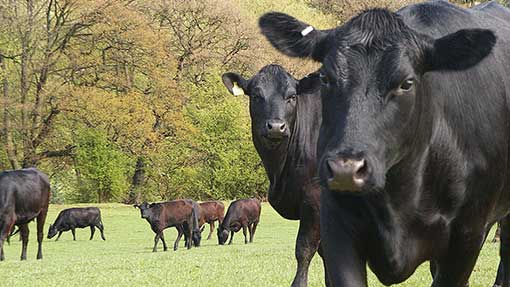Royal Highland Show 2014: Scottish government defends extra funding for beef industry

Scottish rural affairs minister Richard Lochhead has defended his decision to give extra support to the beef industry in Scotland.
Within the CAP reform measures, Mr Lochhead announced £45m of extra funding through Pillar 2 to promote the beef sector.
During a Quality Meat Scotland briefing at the Royal Highland Show on 19 June Mr Lochhead faced questions over whether he had gone too far in promoting beef at the expense of other farming sectors.
“I know this is an unprecedented investment, but it is needed to help the beef industry through the transition from an historic receipt based system to area based payments,” Mr Lochhead said.
“The detail won’t please everyone, but I think we got the balance about right because of the Scotch beef brand’s importance to Scotland’s economy.”
See also: A guide to the latest on CAP reform in the UK
Referring to the looming Scottish independence vote on 18 September, Mr Lochhead said there was a huge opportunity for the Scottish brand on the international market.
“We will have to ensure that Scotch beef can compete with imports and meet demand from abroad.
“To make sure we meet that future demand we need to ensure that we maintain livestock numbers now and these extra payments will help us do that,” Mr Lochhead said.
New database
Part of the £45m pot will be spent on a new database for cattle producers.
The plans for the database are included in a draft report compiled by Scotland’s Beef 2020 Group, which was set up in 2013 to improve the sector.
Chairman of the group Jim McLaren said the report would be released later this summer but he outlined how the database would work.
“Currently cattle producers buy and sell beasts according to what they have always done. And less than 50% of cattle genetic traits are recorded. That’s not acceptable in the developing food market.
“If we intend to secure our future and meet the precise requirements of our customers. We have to know what we have in terms of quantity and genetics and what we want to produce.” Mr McLaren said.
“We envisage that all cattle producers will increase the number of traits recorded for both the dam and sire and feed them into the database. There will also be greater recording of the progeny in the early part of their lives,” he said.
But Mr McLaren said the aim was to avoid double recording of animals.
“We are hoping that the computer based recording system will run in conjunction with recording data for the British Cattle Movement Service rather than create a doubling up of work for Scotland’s farmers,” he said.
See also: All the news from the Royal Highland Show 2014
